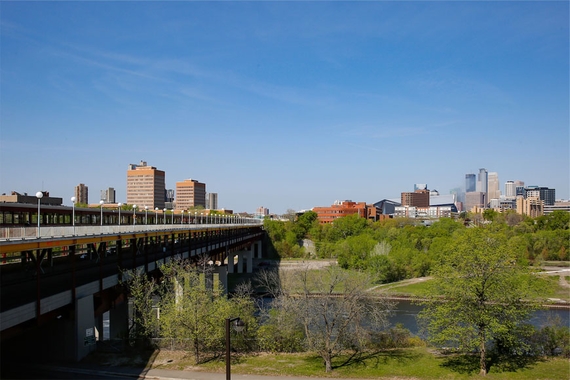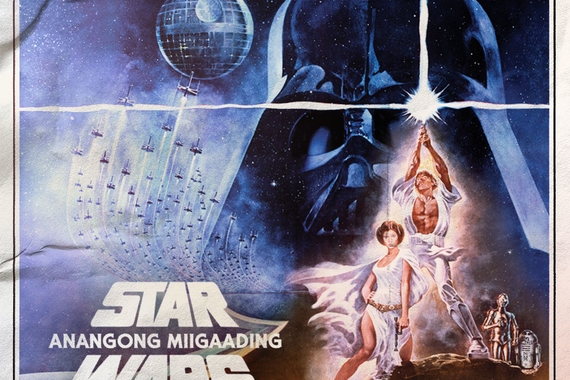“Bridge the Gap”: Linguistic Indigenous Language Revitalization and Resources
The University of Minnesota is located on Dakhóta homelands, and Minnesota is both Dakhóta and Ojibwe territory. It’s important to recognize that the school we attend is on stolen Native land.
“Language is one of the last things we have left,” says Mskwaankwad Rice, an Indigenous PhD student at the University of Minnesota Institute of Linguistics. “We were forced off our lands, were forced to give up our traditional life ways. Language is one of the last things that we’ve been able to hang onto, and at this point, it’s in danger.”
As a learner of Ojibwe, Rice is working to alleviate that danger through language preservation. “Ultimately what we’re trying to do—myself and other people in my position—is bridge the gap between elderly first-language speakers and babies and children,” he says.
“Linguistics can be really helpful in language revitalization efforts,” explains Claire Halpert, director of the UMN Institute of Linguistics, “because it gives you the tools to process a lot of information about a language and really quickly to make generalizations about how the language works.”
When you’re faced with the work of preserving and revitalizing such a crucial part of your culture, it can be daunting, if not draining, at times. That’s when it helps to lean on your community for advice and affirmation.
As Claire Halpert, associate professor and director of the Institute of Linguistics puts it, “Our role is to figure out how to be as good a partner as we can be in the work that needs to be done.” Listening to what Indigenous students need and acknowledging their challenges is an important step in this work, and creating resources that support Indigenous students is a step in the right direction.
Calling Out the Tension
According to data from the UMN Office of Institutional Data and Research, there has been a 37% increase in Indigenous graduate student enrollments in the College of Liberal Arts in the last 10 years, and the Linguistics graduate program is home to a large number of those students. With more students in the program, more students are researching Indigenous languages. At the same time, these students need support, so they can research the languages in a place where they feel comfortable and represented. But Halpert says that “Indigenous students have been historically excluded and historically underrepresented in the field of linguistics,” so she took action.
“One thing we noticed is, this is a population of students who are coming in often with a similar set of goals, and they’re noticing that this field [of linguistics] is not really set up with them in mind,” Halpert notes.
Halpert noticed that Indigenous students were facing some common challenges and put together a team of primarily Indigenous MA and PhD students to create resources for these students. For example, students faced issues “navigating both the field of linguistics and academia in general,” the new resources point out. The authors mention that because the University of Minnesota is a colonial institution, “there is an underlying tension that affects our entire experiences as Indigenous peoples here. That tension may manifest itself in any aspect of our academic lives.” For example, the “misappropriation of Dakhóta language for a sports slogan,” and “the triggering passages one may come across in a textbook.”
Creating Resources
The institute received a grant to hire students to create a guide for prospective, current, and incoming Indigenous graduate students. It helps people navigate the decision of whether or not to pursue linguistics, as well as navigate their time in graduate school. Along with the general information about the linguistics field and other resources beyond the Institute, there was an FAQ (collection of frequently asked questions) created to “give [the students] a little background on what to expect, not just what grad school is all about but also issues they might face as Indigenous students,” Rice says. He adds that the “best resource has been the people,” showing how vital an excellent faculty is when it comes to supporting students who face challenges.
Other resources at the University of Minnesota that support Indigenous students include workshops and roundtable discussions organized by the Department of American Indian Studies and the Office for Public Engagement, where their goal is to help Indigenous students “remember that [they] deserve to be where [they] are.” There is also a task force, The TRUTH Project, which has written a report “with recommendations for how the University can improve its relations with Minnesota’s 11 Tribal Nations.” A few of these recommendations include: the University of Minnesota Board of Regents having an annual review and rematriation of Indigenous lands; the Board of Regents adopting “measurable policies that remedy the lack of Indigenous representation in administration, tenure-track faculty, staff and students on all UMN campuses;” and the Board of Regents “enact[ing] policies that respect tribal sovereignty and cultural heritage.”
Making the Graduate School Decision
Now that this resource will be available on the institute’s website, Halpert says, “a big hope that I have is that this also is a way for people to even make [the decision to go to grad school] in the first place.” She mentions that before these new resources on the website, there was a lack of support to show people how to even apply to grad school, or how to make the decision to apply. “In general, at the graduate level,” she says, “there’s just fewer resources for students on how to navigate things.”
What’s unique about the U of M, and more specifically the linguistics graduate program, is that it provides prospective students with these resources. Her hope is that this decision will now be less daunting not only to Indigenous students, but to any student thinking about graduate school.
By Harriet Bennett
This story was written by an undergraduate student in CLA.



